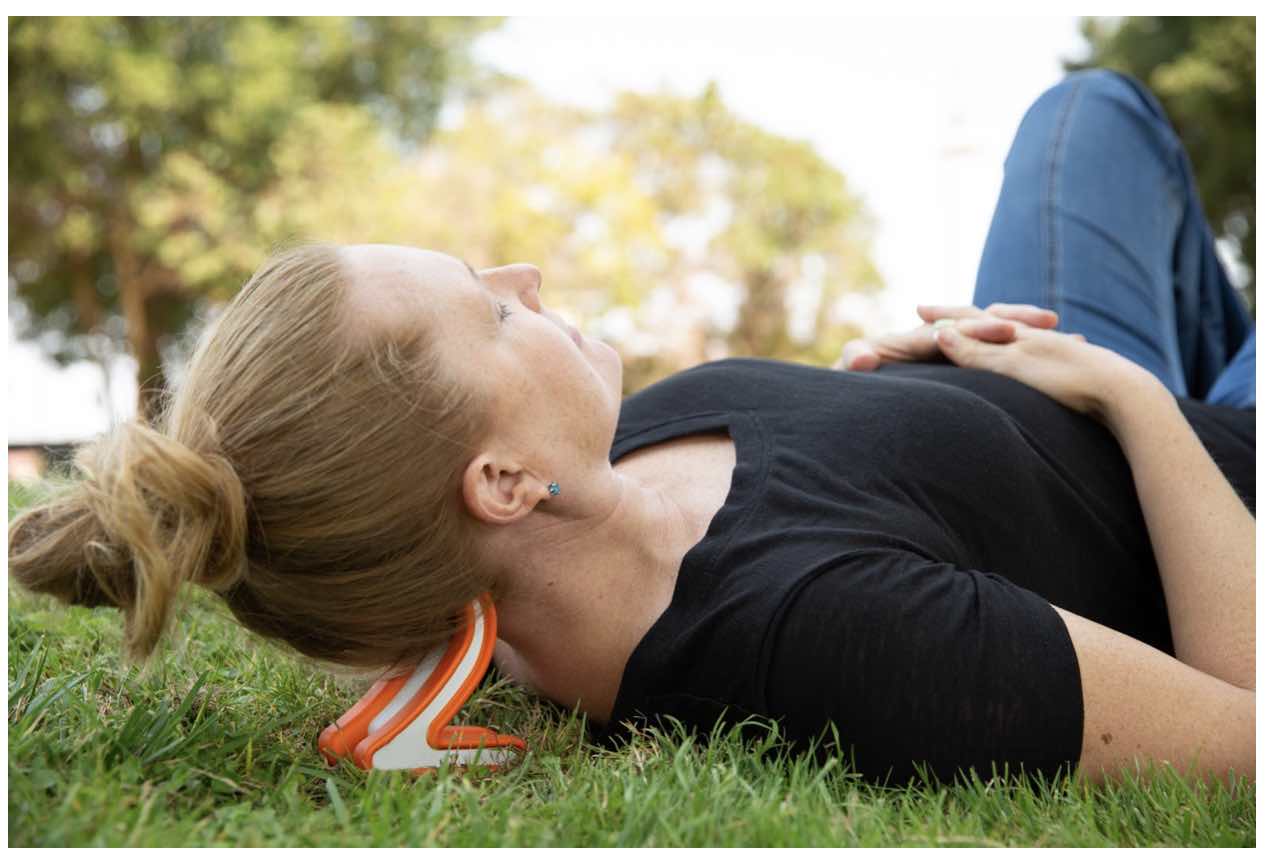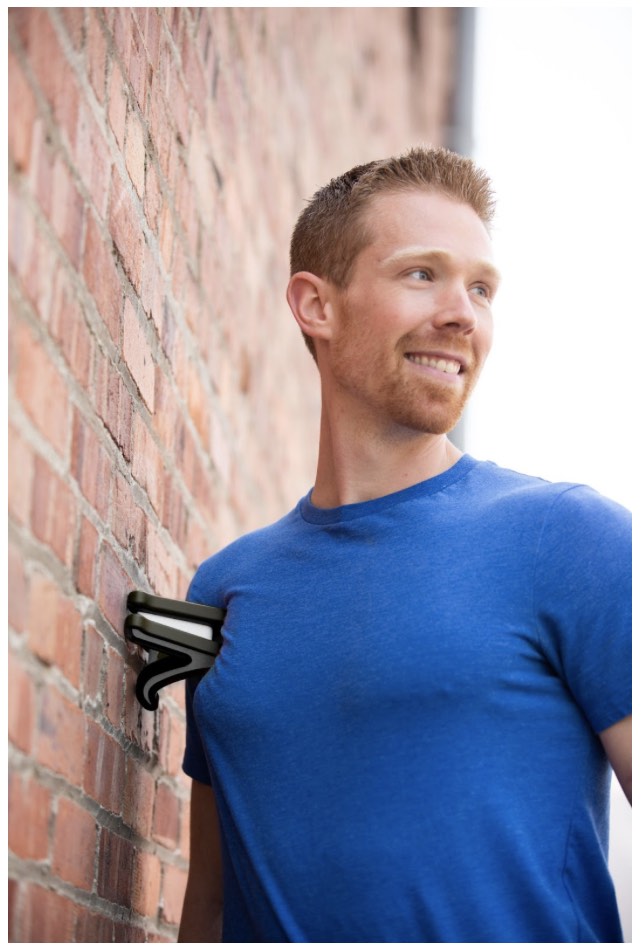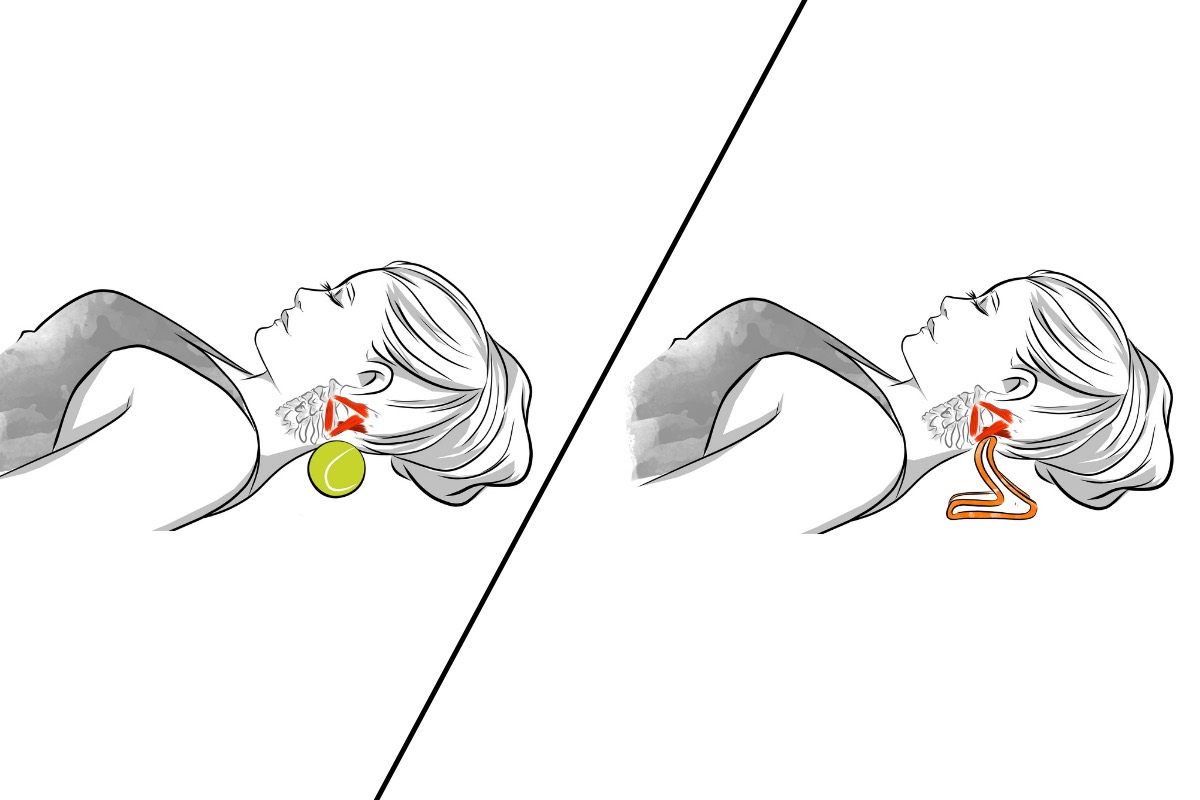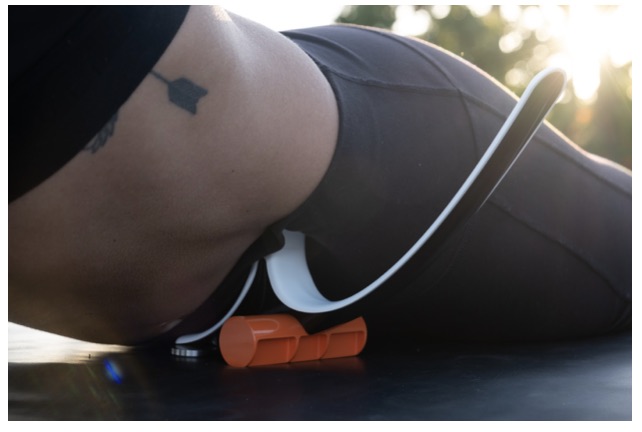You know those spots on your shoulders? The ones you keep pressing and rubbing because your shoulders have been steadily squeezing towards your ears?
If you’ve spent any time on a phone, computer, couch, or sitting in traffic with tight shoulders, you understand muscle knots. What you might not know is how to effectively get rid of them.
Stop Foam Rolling Everything
The spot on your shoulder or your lower back that feels extra tight? It may not be the source of your pain.
In fact, a small number of muscles are causing most of the muscle tension and pain in your body. You don’t have to stretch and release ALL your muscles: focus on the ones that have the greatest impact.
According to Christine Koth, MPT, and founder of Aletha Health, our modern sitting and scrolling habits are creating tightness in two of the body’s cores: the Primary Core (hips) and Secondary Core (neck/shoulders). Tightness in these areas are the primary cause of pain in most of her clients. Tension in these core areas affects everything else.
Your Neck and Shoulder Pain is Caused by These 2 Muscles
That knot in your shoulder (upper trap) you’re trying to squeeze out? This muscle gets tight when you’re texting, typing, driving, or slouching: your shoulders round forward and your neck cranes forward or looks downward. This pattern causes Tech Neck, or forward head posture, creating tension in the entire upper body. As a result, you may experience neck stiffness, tight shoulders, jaw pain, or tension headaches.
The source of that knot is tension in 2 places: the small muscles at the base of your skull (suboccipitals) and your chest (pec minor).
Ever tried relaxing your neck with a tennis ball? Not ideal. That’s why Koth created the NUCKLE ($99): the first and only anatomically-shaped muscle release tool designed to access those small, deep tight spots in the key muscles causing pain: the tiny tight muscles at the base of your skull (suboccipitals) and the pec minor muscles in your chest.


Tight Muscles Release Best with Direct, Prolonged Pressure
You can’t just give your shoulders a squeeze and call it a day. And while you might get temporary relief stretching your neck and chest muscles, stretching simply isn’t enough to release muscle knots.
Tight muscles release best with direct, prolonged (30-90 second) pressure. In fact, rubbing over muscle knots can aggravate trigger points and increase pain in the long run! You need angled pressure, designed to reach and release these key muscles.

“Rounded massage tools, like lacrosse balls, just aren’t the right shape to press and release these specific muscles” says Koth.
Your Low Back and Hip Pain is Caused by These 2 Muscles
The same is true for your lower back and hip pain, or what Koth calls your Primary Core. Habits like working from the couch, crossing the same leg over the other, or sitting for a long time (even if you go for a run afterwards) creates tension in the iliopsoas muscle – your primary hip flexor – which tightens from long hours in a shortened and overworked position. These deep muscles causing low back and hip pain are actually accessed from the front of your hip. Usually releasing these hard-to-access muscles requires a skilled therapist’s thumbs. This is why Koth invented the Hip Hook: the only tool specifically designed to access and release all the knots along the iliacus and psoas muscles.
“The ‘Hip Hook’ Is the Tool Doctors Recommend To Release the Inner-Most Tightness in Your Body” – Well + Good magazine

Both these tools, the NUCKLE and the Hip Hook, use your body weight and anatomically-accurate, clinically-designed shapes to provide the direct, prolonged pressure necessary to target –and finally release– your exact pain points, allowing you to access those “magic spots” that give you the pain-free exhale you deserve.
Don’t ditch the stretching entirely: it’s great for circulation and relaxation. But muscle knots simply don’t release that way. It’s a simple solution known by physical therapists: apply direct, prolonged pressure to the key muscles causing pain, and you’ll get relief.
Advertising disclosure: We may receive compensation for some of the links in our stories. Thank you for supporting LA Weekly and our advertisers.
